As an Amazon Associate I earn from qualifying purchases.
Recado negro is one of the more unusual, and distinctive, flavor bases in Mexican cooking. It comes from the Maya regions, so Yucatan on south into the countries of Guatemala and Honduras.
As you can guess, it’s black, and hinges on charred ingredients. Here’s how to make it at home.

What you’ll be making is a thick spice paste that you will keep in the fridge pretty much indefinitely, dipping into it to make dishes like relleno negro, or what you see in this post, a sort of picadillo cooked with diluted recado negro.
Recado negro will take you to cool, smoky places, with warming flavors both picante and sweet.
The flavor of recado negro is heavy on the char, with spiciness from burnt chiles, depth from charred garlic and corn tortillas, and a touch of the exotic from the toasted spices.
I’ll be honest, though: If you eat it straight, the burnt flavor is overpowering. This is why you always dilute recado negro. And why it takes 24 hours to make it. More on that in a moment.
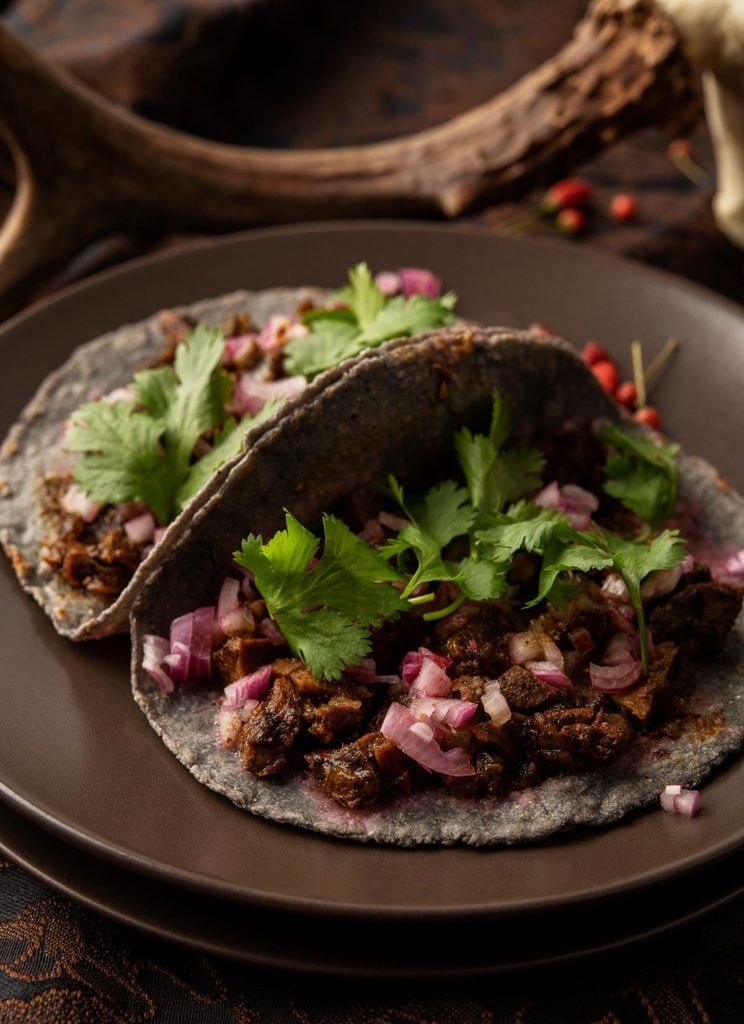
I am indebted to the late David Sterling, whose life’s work culminated in the amazing book Yucatan, which I can’t recommend highly enough. His recipe is the backbone to this one, although I researched several dozen others in both English and Spanish to come up with mine.
Most recipes ask you to literally set fire to a bunch of dried chiles, but there is no need for that. You do want them totally blackened, but the caustic flames of burning chiles are a bit much, even for me.
Better instead to do what Sterling suggested, which is to roast them in a very hot oven with the fan on for about 15 minutes or so. You then need to crush the burnt chiles, run water through them a few times, then finally soak them overnight. This process tames a lot of the “burnt ashtray” effect you’d get with straight burnt things.
And it is vital that you don’t skip this step.
You also need to more or less set corn tortillas on fire to blacken them, and then char garlic and onions.
Ultimately you blend all this with spices and such, then wring it through cheesecloth to remove a lot of moisture, which leaves the recado negro drier, but also way more stable.
A splash of vinegar and a hit of salt further extend its life.
Other than relleno negro, you can use recado negro in Yucatecan picadillo, or as part of a marinade for carne asada.
Note that this is not the same stuff as mole negro, which is another black dish from Mexico. That one is from Oaxaca.
Recado Negro Spice Paste
Equipment
- Cheesecloth
Ingredients
- 1 ounce dried arbol chiles
- 7 ounces dried guajillo or New Mexican chiles
- 10 stale corn tortillas (7 ounces)
- 1 tablespoon achiote paste
- 1 teaspoon achiote verde (optional)
- 1 tablespoon black peppercorns
- 1 teaspoon cumin seed
- 1 tablespoon allspice berries
- 10 cloves
- 1 head garlic
- 1 large white onion, peeled and quartered
- 2 chipotle chiles
- 2 tablespoons Mexican oregano
- 3 tablespoons vinegar, distilled, cider or banana
- 2 tablespoons salt
Instructions
- Preheat your oven to 425°F. Remove the stems from the dried chiles and arrange them in a large roasting pan, ideally in one layer. Roast them until they are completely black and smoking (use your oven fan!!!), about 15 minutes or so. Turn off the oven but leave the chiles in there another 30 minutes.
- While this is happening, it's a good idea to take out your tortillas and set them on the counter. You want to work with stale tortillas the following day.
- Move the chiles to a large pot and just barely cover with water. Crush and mash them with a potato masher or somesuch. Don't puree them. Put all the chiles into a strainer that you have lined with cheesecloth. Squeeze out all the water. Discard this water, which will taste like an ashtray.
- Put the chiles back in the pot, or a bowl, and cover with water again. Use running water to clean your cheesecloth into the bowl, so you catch the bits of chile stuck to it. You will want to soak the blackened chiles overnight, changing the water 2 times. Just pour off the water each time, no need to use the cheesecloth for this.
- The next day, char your tortillas. If you have a gas burner, this is easy: Set them on the burner until they catch fire, blow them out, and flip and char the other side. If you just have electric, you can do the same thing but it's not as easy. You can also just set them on a very hot cast iron pan or griddle until you get lots of blackening.
- Crush the tortillas and put them in a blender. Add to the blender the achiote paste and the achiote verde, if using.
- Toast the peppercorns, allspice berries, cumin seed and cloves in a dry pan until everything smells wonderful. Grind this in a spice grinder, then add to the blender.
- After you've charred the tortillas, you will need to char your onion and garlic. Separate the cloves of the garlic without peeling, then blacken the skins on a comal, griddle or cast iron pan. Do the same with the quartered onion, charring the two cut sides of the onion quarters. Chop all this an add to the blender.
- Strain the chiles, reserving the water. Add that, the chipotles and the Mexican oregano to the blender. Puree all of this thoroughly, adding the soaking water as needed to make the blades run smoothly.
- Now, set up that strainer and cheesecloth again and pour the contents of the blender into it. Squeeze out as much water as you can.
- Finally, scrape the mixture into a clean bowl and add the vinegar and salt. Mix well, pack into glass jars, and store in the fridge. It will last, more or less, forever.
Notes
Keys to Success
- This is an involved recipe, but it will last a long time in the fridge, so you need only make it once in a while to have a good supply.
- The achiote paste is in pretty much every Latin market in America, so that shouldn’t be a stopper for you. Ditto for Mexican oregano. Both are available online, too.
- Do not skip the water changes in that first overnight soak. It’s vital to the success of the recipe, taming the bitter, acrid taste of the freshly burnt chiles.
Nutrition
Nutrition information is automatically calculated, so should only be used as an approximation.


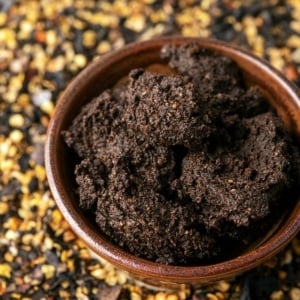
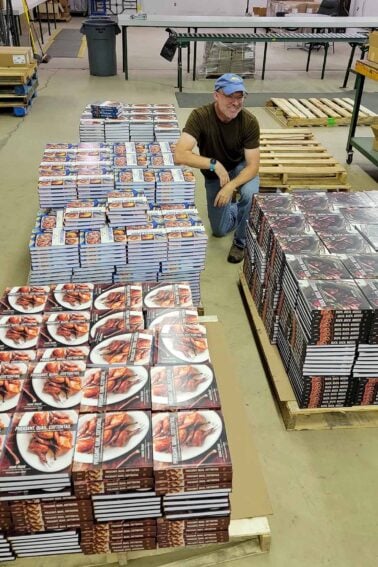
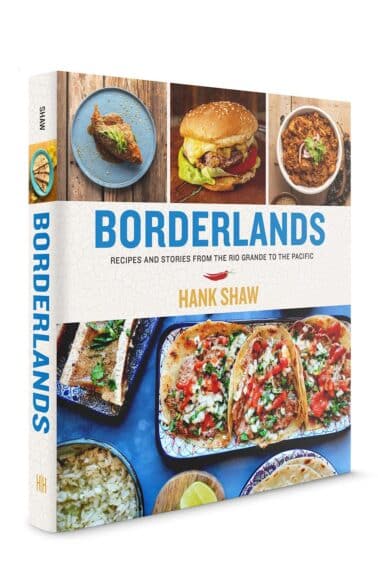
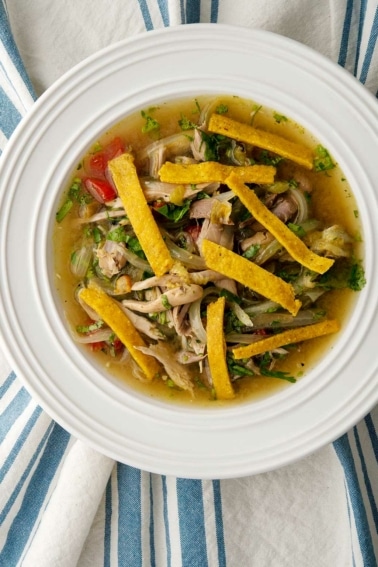
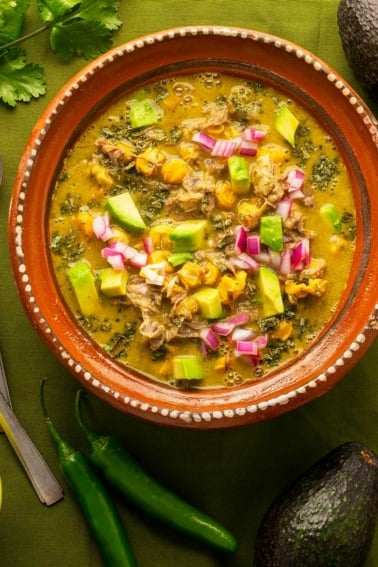
Turned out great! It was a complicated recipe and I messed up my whole kitchen, lol, but it’s so worth it. I used chile puya instead of guajillo and even found banana vinegar and achiote verde. I had to process it in batches. This made about 8 cups. That will last me a long time. Thank you so much!
If using puya chiles, should I use 8 oz of just puyas to achieve similar results?
JPickel: Yes, because puyas are hotter than guajillos.
I’ve had this as a powder in Cozumel. I’ve tried and tried to find a similar recipe but as a powder. Do you have an alternative recipe? The Cafe said it was burnt tortillas, habaneros and salt, but obviously there’s more to it. I had it at 2 separate places and both said basically the same 3 things…any suggestions?
Cindy: It’s likely this that has been dehydrated and powdered.
I live in the Yucatan and have hired a Maya man to make this from scratch. I would never repeat it — way too much work when I can buy it in the Mercados very inexpensivly. Your recipe looks pretty close. Is there anywhere that you can actually buy it in the US?
When charring hot peppers, I frequently char them over the flames on my gas stove, turning them every few minutes…
Just made this 5 days ago. We had some on tacos and will be using it on a lot of things coming up. Excellent!
Would there be any point to drying it out on a pan in a low oven or something at the end? It’s not like you’re going to burn it
Peter: To what end? As a paste it keeps for many months in a cool place.